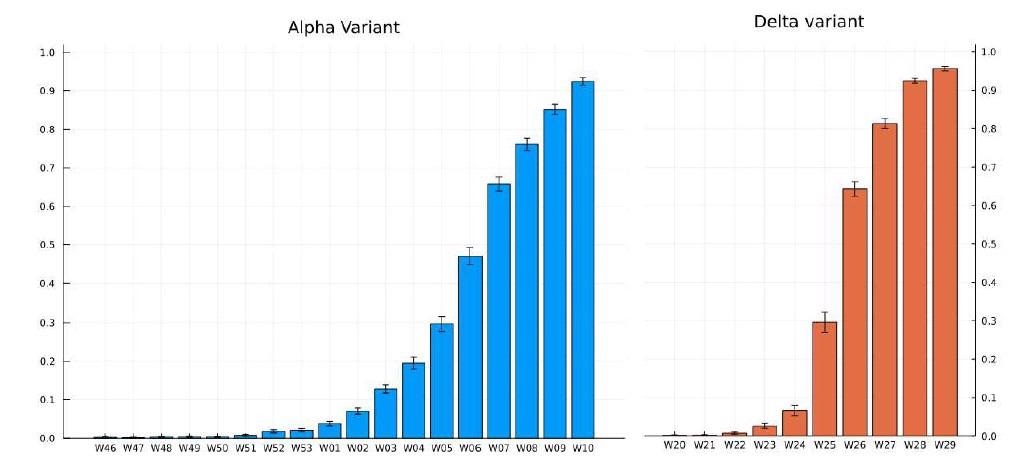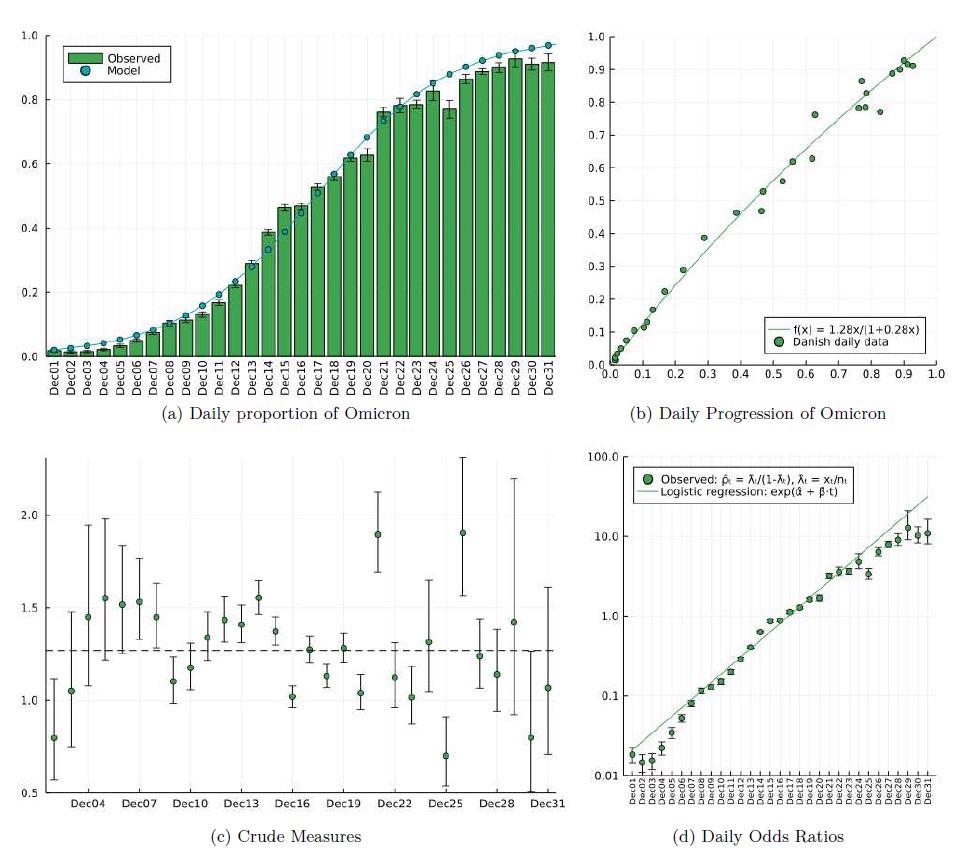The first variant of severe acute respiratory syndrome coronavirus 2 (SARS-CoV-2), namely the Alpha variant (B.1.1.7), first appeared in Britain in late 2020. It was more contagious than earlier lineages and was found to increase hospitalizations by about 42%. The Delta variant (B.1.617.2) wreaked havoc in India in April 2021, while the most recent variant is Omicron (B.1.1.529), which was first detected on November 22, 2021, in southern Africa.
A new study, available on the arXiv* server, proposes a simple dynamic model for estimating the relative contagiousness of two variants of SARS-CoV-2, namely Alpha and Delta. Furthermore, it demonstrates how to compute the effective reproduction number for a new variant without contemporaneous sequencing results. This is important to assess the state of the pandemic in real-time.

Study: Relative Contagiousness of Emerging Virus Variants: An Analysis of the Alpha, Delta, and Omicron SARS-CoV-2 Variants. Image Credit: anushkaniroshan/Shutterstock

 *Important notice: arXiv publishes preliminary scientific reports that are not peer-reviewed and, therefore, should not be regarded as conclusive, guide clinical practice/health-related behavior, or treated as established information.
*Important notice: arXiv publishes preliminary scientific reports that are not peer-reviewed and, therefore, should not be regarded as conclusive, guide clinical practice/health-related behavior, or treated as established information.
The Study
Peter Reinhard Hansen, the author of the study, utilized statistical methods from econometrics to estimate the infectiousness of new viral variants and better predict case numbers once a new variant emerges. He used Danish health data to calculate the reproductive number (R0) for alpha. The R0 provides an estimate of the average transmissibility of an infectious disease in a susceptible population with minimum immunity. Alternatively, Rt measures the direction for case numbers during the pandemic.
The key object of interest (denoted by γ) was the relative contagiousness of two virus variants, also referred to as the competitive advantage. The time series of the ratio of new-variant cases to total cases were modeled to be binomially distributed, with a time-varying parameter, λt. The relative proportion of the two variants provided insights into the relative contagiousness. This ensured the analysis was independent of R0 for the existing lineage, which is a great advantage as the R0 varies notably over time due to a wide range of factors. As long as the variation in sampling does not systematically favor one variant over another, the analysis should be robust to factors, such as time variation and testing intensity. In terms of methodology, Hansen used maximum likelihood estimation and logistic regression techniques.

Weekly proportions of Alpha and Delta variants relative to all cases.
Key Findings
Estimating the reproduction number for a new variant could be challenging because genomic data for positive cases are available with some delay. However, Hansen showed that the R0 for a new variant could be estimated from the aggregate R0 and most recent estimate of the proportion, λ. The effective R0 can also be projected forward with high precision, making it possible to be computed without contemporaneous sequencing results. The method was applied to Danish data to study the Alpha and Delta variants. The proportion of the new-variant cases increased rose from below 0.5% to over 90% during the period when the Alpha and Delta were the dominantly circulating strains, and it was also observed that the progression of the Delta variant was much more rapid than the Alpha variant.

Figures with empirical results for the Omicron variant.
The first sample period, corresponding to the Alpha variant, was November 9, 2020, to March 14, 2021 (18 weeks). The second sample period, May 17 to July 25, 2021 (10 weeks), was the period where the Delta variant was dominant in Denmark. Estimates showed that the Alpha variant was about 86% more contagious per week than the ancestral variant. The Delta variant was estimated to be 216% more contagious than the Alpha variant on a weekly basis. The R0 for the Alpha variant was 1.5 times larger than the ancestral variant, while for the Delta variant, it increased by an additional factor of 2.17. These results imply that 80% of individuals need to be immune to the Alpha variant and 90% to the Delta variant to reach herd immunity.
Concluding Remarks
This study demonstrated how the relative contagiousness of a new virus variant could be estimated by maximum likelihood estimation and adopting logistic regression techniques. The advantage of this method is its applicability in time series with missing data and also the possibility of extension to cases with more than two competing variants. Hansen stated that the results for the Alpha and Delta variants have external validity as they relate directly to the basic R0 of the virus. Given the speed with which novel variants have emerged, it is plausible that even more contagious variants will emerge in the future. It is, however, encouraging that existing evidence shows that the Omicron variant is less severe and that vaccinations continue to reduce transmissions and disease severity.

 *Important notice: arXiv publishes preliminary scientific reports that are not peer-reviewed and, therefore, should not be regarded as conclusive, guide clinical practice/health-related behavior, or treated as established information.
*Important notice: arXiv publishes preliminary scientific reports that are not peer-reviewed and, therefore, should not be regarded as conclusive, guide clinical practice/health-related behavior, or treated as established information.
Journal reference:
- Preliminary scientific report.
Hansen, R.P. (2022) Relative Contagiousness of Emerging Virus Variants: An Analysis of the Alpha, Delta, and Omicron SARS-CoV-2 Variants. https://arxiv.org/abs/2110.00533